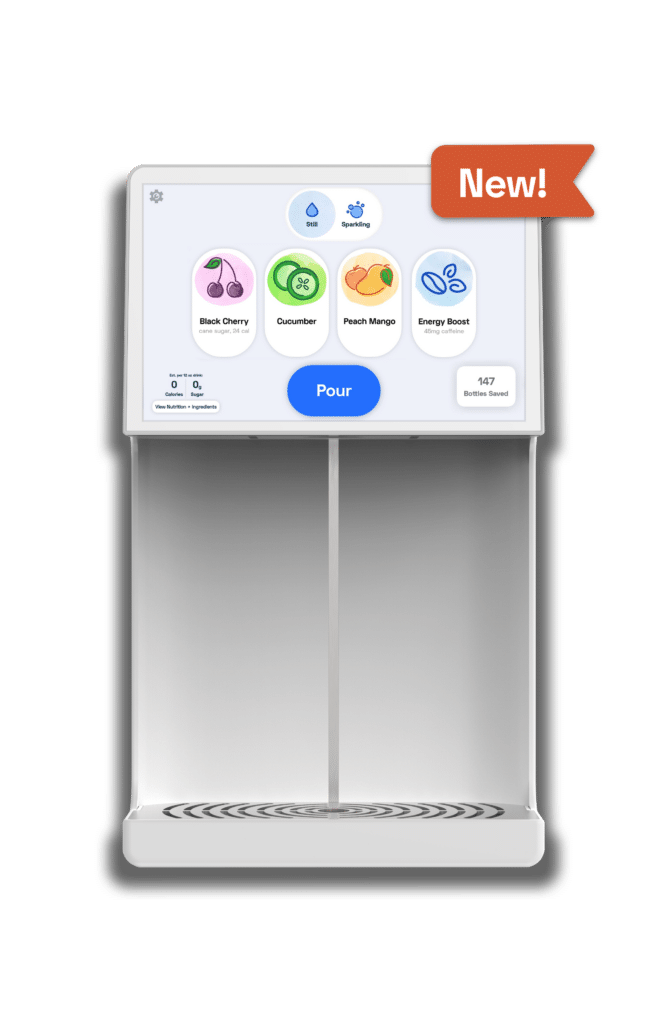Last updated February 14, 2025.
The workplace is at a crossroads. Employers need the collaboration and culture-building that only arise through in-office face time. Employees, having proven their productivity remotely, want flexibility and balance. With that tension, we now have coffee badging, a new buzzword with a specific meaning: showing up just long enough to be seen before heading back to work elsewhere.
What does coffee badging mean?

Coffee badging refers to the practice of employees making a brief appearance at the office—often just long enough to swipe their card and grab a coffee—before heading out to work remotely for the rest of the day.
This phenomenon has gained traction as companies implement stringent return-to-office (RTO) mandates while still allowing hybrid work. Feeling that presence in the office is more about optics than actual necessity, many employees make the token effort of showing up before retreating to a more comfortable or productive work environment.
A 2023 report by Owl Labs found that 58% of hybrid employees admitted to “showing face” at the office before leaving. Meanwhile, office attendance in 2024 has only reached 64% of pre-pandemic levels. Clearly, many employees see the office as optional, and coffee badging is a symptom of this evolving dynamic.
But does it mean employees are disengaged? Not necessarily.
There’s a case for rethinking office attendance, and coffee badging is a result of it.
Rather than seeing coffee badging as a failure, companies should recognize it as a natural adaptation to the evolving dynamics of hybrid work. The real question isn’t how to prevent employees from checking in and heading out—it’s how to make the office a place they actually want to stay.
Bevi surveyed full-time, non-remote office workers across industries like technology, finance, healthcare, and real estate to better understand employee sentiment around return-to-office (RTO) policies. The findings reveal a growing divide: 40% of respondents are required to work in-office five days a week, and while most believe their company’s policy is fair, nearly a third have considered looking for a new job because of it.
This underscores a truth: employees aren’t rejecting the office itself—they’re rejecting outdated approaches to in-office expectations. If companies want to attract and retain top talent, they need to focus on what actually matters to employees: productivity, autonomy, and the office as a resource rather than a requirement.
Here’s what the data tells us about why employees are resisting strict RTO mandates—and how companies can rethink office culture to better support engagement and retention.
1. Productivity speaks louder than presence
If employees consistently meet or exceed their work goals, does it really matter where they’re working from? Research shows that remote work has proven to be just as productive—if not more so—than traditional office setups.
According to the U.S. Bureau of Labor Statistics, industries that saw an increase in remote work during the pandemic also experienced higher total productivity growth between 2019 and 2022. Based on this data, it seems clear: management’s focus should be on output, deadlines, and impact—not office hours.
2. Freedom and autonomy drive engagement
Nobody likes feeling micromanaged. Rigid attendance policies that focus on hours over impact can erode morale and undermine employees’ sense of engagement.

Conversely, when employees are trusted to do their jobs without unnecessary oversight, engagement, performance, and productivity all improve. Research published in Frontiers in Psychology found that when employees have the freedom to make decisions, they develop a stronger sense of ownership and responsibility, leading to better individual and team outcomes.
Instead of enforcing attendance, companies should focus on creating an environment where flexibility and choice are valued, ensuring that in-office time feels both necessary and meaningful.
3. The office is a resource, not a requirement
The COVID-19 pandemic has fundamentally transformed perceptions of the workplace. For many employees, the office is a tool, not a home base. Rather than viewing attendance as a duty, they treat the office as a resource for collaboration, meetings, or social engagement. This on-demand approach actually benefits employers, too, as it can lead to smarter space utilization, reduced real estate costs, and a more intentional use of office time.
While certain roles and industries still benefit from face-to-face interaction, the genie is out of the bottle. Employees are unlikely to accept a return to the rigid, pre-pandemic work model. Moreover, enforcing strict RTO policies can expose employers to legal risks, including potential discrimination claims.
Coffee badging means employees aren’t staying as long as they should. How do you encourage them to stick around in the office?
If you’re a business leader still hoping to see more employees in person, the solution isn’t mandates—it’s incentives. Employees need a reason to stay beyond their first coffee. Here’s how you can make the office a more appealing place to work:
1. Make in-office time purposeful
The best way to counter coffee badging (and anti-RTO sentiment on the whole) is to ensure that in-office days are meaningful. Schedule collaborative activities, strategy sessions, or training opportunities that actually benefit from face-to-face interaction.
When employees know they’re coming in for valuable discussions rather than Zoom calls from a different location, they’ll be more inclined to stay.
2. Provide amenities that employees (actually) want
Offices that are merely a space to sit and work will never be more attractive than a comfortable home setup or the flexibility to pick your kid up from school in between meetings. Instead, companies should create an environment that adds value.
In our recent RTO Trends survey, 58% or respondents shared that amenities would motivate them to work on-site more often. Popular office perks that encourage longer stays include:
- Wellness programs (on-site fitness classes, meditation rooms)
- Free meals or high-quality snacks
- Collaborative lounge areas that feel less like cubicles and more like a social hub
- A well-stocked kitchen complete with smart water coolers like Bevi
By investing in these kinds of perks, companies can transform the office from a mandatory destination into a space that supports employees’ professional productivity and personal well-being.
3. Reinforce company culture and social connection
Many employees still value the office for its social and cultural benefits. Even with modern tools like Slack or Asana, networking, mentorship, spontaneous conversations, and creative brainstorming sessions are more constructive in person.
Voluntary team lunches, casual coffee chats, and after-work events can make the office feel like a place of community rather than obligation. Employees who feel connected to their colleagues are more likely to choose the office over remote work.
Coffee badging meaning for businesses: What leaders need to know first and foremost

Instead of cracking down on coffee badging and the practice of leaving early, leaders should see it as a valuable indicator of employee needs in the hybrid era. Rather than viewing it as a sign of disengagement, it’s an opportunity to reassess why employees should want to be in the office—and how to make their time there meaningful. Here’s what this shift teaches us:
- Productivity should take priority: The most effective companies focus on output, deadlines, and impact rather than enforcing rigid in-office policies. If employees are meeting their goals, where they work should be less of a concern.
- Autonomy drives engagement: Employees thrive when they are trusted to work in a way that suits them. Micromanaging attendance erodes morale, while flexible policies encourage ownership, responsibility, and better performance.
- The office must add value: The modern workplace isn’t just a default workspace—it’s a tool for collaboration, connection, and engagement. Companies that make the office an asset, not an obligation, will be the ones employees actually want to return to.
Ultimately, coffee badging isn’t the problem—it’s a symptom of a larger shift in workplace expectations. The real challenge isn’t enforcing attendance; it’s redefining the purpose of the office in a way that aligns with both business goals and employee needs.
Rigid RTO mandates that prioritize face time over productivity risk alienating employees, reducing engagement, and even exposing companies to legal risks. Meanwhile, organizations that embrace flexibility, trust, and purpose-driven in-office experiences will be the ones that attract and retain top talent.
By making the office an asset, not an obligation, businesses can create an environment where employees actually want to stay—long after their morning coffee.






